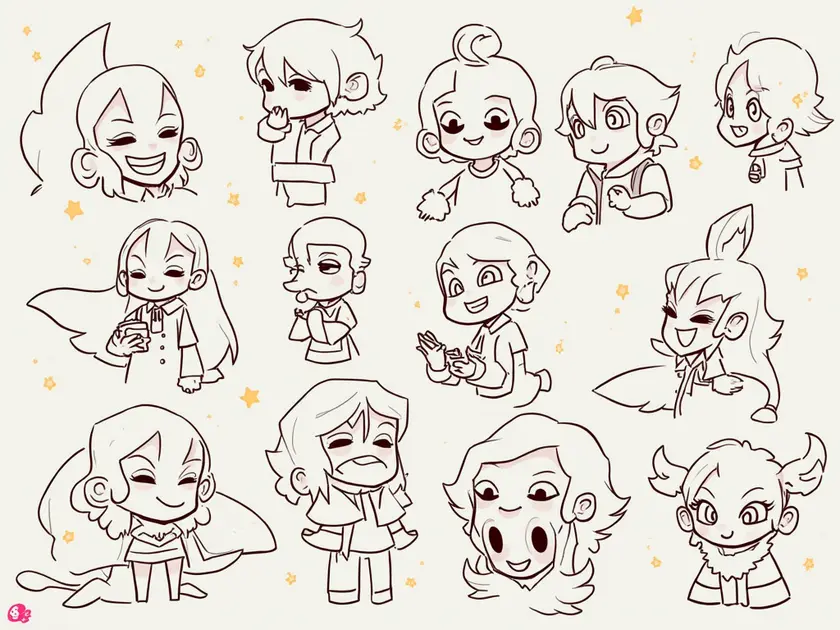The Art of Digital Illustration: Tips and Techniques
In the realm of digital artistry, mastering the craft of digital illustration is a journey that requires skill, creativity, and technical knowledge. Whether you are a beginner looking to dip your toes into the world of digital illustration or an experienced artist seeking to enhance your skills, understanding the essential tips and techniques is crucial. From selecting the right software to grasp the intricacies of composition and color theory, as well as mastering various digital illustration techniques, this guide will provide insights and strategies to help you elevate your digital artistry to new heights. Stay tuned as we delve into the nuances of each aspect, equipping you with the tools needed to unleash your creativity and create stunning digital illustrations.
Choosing the Right Software for Digital Illustration
When it comes to digital illustration, selecting the right software is crucial for achieving your desired results. With a plethora of options available in the market, it can be overwhelming to choose the best one for your needs. Here are some factors to consider:
Compatibility
- Ensure that the software is compatible with your operating system to avoid any technical issues.
- Check if the software supports the file formats you work with frequently.
Features
- Look for software that offers a wide range of tools and features to enhance your creativity.
- Consider the flexibility of the software in terms of customization and adaptability to different styles.
User Interface
- Opt for software with an intuitive user interface that is easy to navigate.
- Customizability of the interface can also contribute to a more efficient workflow.
Cost
- Consider your budget and choose software that offers the best value for money.
- Some software may have subscription-based models, while others offer one-time purchase options.
By carefully evaluating these factors, you can select the software that best suits your digital illustration needs and helps you unleash your creativity.
Understanding Composition and Color Theory
Composition and color theory are essential elements in creating visually appealing digital illustrations. Understanding how to effectively use composition and color can greatly enhance the impact and message of your artwork.
The Importance of Composition:
- Composition refers to the arrangement of elements within your artwork.
- A well-thought-out composition can guide the viewer’s eye and create a sense of balance and harmony.
- Consider elements such as balance, contrast, focal points, and leading lines when composing your digital illustrations.
Color Theory Basics:
- Color theory is the study of how colors interact with each other.
- Understanding the color wheel and color harmonies can help you create visually pleasing color schemes.
- Primary colors (red, blue, yellow), secondary colors (orange, green, purple), and tertiary colors are fundamental to color theory.
Applying Composition and Color Theory:
- Experiment with different compositions and color schemes to see what works best for your digital illustrations.
- Use color to evoke emotions or convey specific messages in your artwork.
- Consider the psychological impact of different colors and how they can influence the viewer’s perception of your illustration.
By mastering composition and color theory, you can take your digital illustrations to the next level and create captivating and impactful artwork that resonates with your audience.
Mastering Different Digital Illustration Techniques
When it comes to digital illustration, there are various techniques that artists can master to enhance their skills and create captivating artwork. Below are some key techniques to consider:
1. Line Art:
- Using different brush sizes and pressure sensitivity to create intricate and detailed line work.
- Experimenting with line weight to add depth and dimension to illustrations.
2. Digital Painting:
- Utilizing digital brushes to mimic traditional painting techniques such as watercolor, oil, and acrylic.
- Blending colors seamlessly to create realistic textures and gradients.
3. Vector Illustration:
- Creating scalable and editable illustrations using mathematical equations and geometric shapes.
- Mastering the pen tool for precise lines and shapes in illustrations.
4. Mixed Media:
- Combining traditional and digital elements to create unique and visually appealing artwork.
- Experimenting with textures, patterns, and overlays to add depth and interest to illustrations.
By mastering these different digital illustration techniques, artists can expand their creative horizons and produce stunning visuals across various platforms.






